Military, infectious diseases
In 1914 the War Office decided to establish a military hospital in the countryside near London for soldiers suffering from acute infectious diseases, such as typhoid fever, dysentery and septicaemia.
The Trustees of Addington Park, a large property near Croydon, generously placed the house and gardens at the disposal of the War Office for this purpose. The mansion house of the estate - Addington Palace - had once been the home of the late Frederick English, a South African diamond merchant who had died in 1909.
The Addington Park War Hospital opened on 13th December 1914 with 130 beds. The entire cost of maintenance (£20,000 a year) was guaranteed by the War Office, whilst the cost of the equipment for the Hospital and the laboratory (£5,000) was borne by the Joint War Committee of the British Red Cross Society and the Order of St John of Jerusalem, and private subscribers.
However, shortly before its opening, the Hospital had been asked to provide accommodation for convalescents who had had enteric disease (that is, diseases that enter through the mouth and intestinal tract which are usually spread by contaminated food, water, or contact with contaminated vomit or faeces, such as typhoid, paratyphoid and dysentery), so that a search for carriers (see below) could systematically be undertaken. The Hospital Committee agreed and, while hutted wards for 200 patients were being built, some 150 convalescent patients were accommodated in Addington Palace. The cost of erection of the huts and their equipment was borne by the War Office.Provisional arrangements were made to use the Hospital as a clearing-house for convalescents from enteric disease, while isolation hospitals dealt with acute cases. (Acute cases from overseas were sent directly to the Royal Victoria Hospital at Netley or to the Military Hospital at Devonport). If accommodation was not available at Addington Park, convalescent patients were sent to suitable auxiliary hospitals (pre-war convalescent homes), while their stool and urine samples were sent weekly to Addington Park for laboratory investigation. If a patient proved to be a carrier of infection, he was transferred to Addington Park as soon as he was fit to travel.
The average length of detention at the Hospital was six to eight weeks. Bacteriological tests were undertaken at weekly intervals. Once free of disease, patients were sent on furlough. True carriers, under an Army Order, were eventually invalided out of the army and returned to their homes.
By December 1915 more accommodation was needed and, in 1916, additional huts were erected to house a further 350 patients, 150 of which were set aside for Australian convalescents (paid for by the Australian government). It was also proposed that a military depot be established in Addington Park for 1000 patients to replace the auxiliary convalescent homes which currently helped to clear the beds at the Hospital. While this new camp was being built, 1200 patients were sent to Woldingham Camp, while their specimens were sent weekly to the Hospital for laboratory testing.
After the war the Hospital remained the central dysentery hospital for the Army, receiving convalescent patients from the other twelve dysentery hospitals in the UK. It also provided special treatment for carriers and chronic cases.
It closed in 1919.
Present status (April 2009)
After the war the house remained empty for many years. In 1928 it was acquired by the Addiscombe Garden Estates. Part of the land became the Addington Palace Golf Club while the remainder was sold for housing development. The southern part of the estate was sold to Croydon Borough Council, who converted it into Addington Park, a public park.
In 1951 the Council purchased the remainder of the estate, including Addington Palace, the mansion house. From 1953 until 1996 the mansion was leased to the Royal School of Church Music.
Addington Palace is now leased by a private company who have developed the site into a Country Club, wedding and banqueting venue and conference centre.
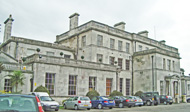

The Grade II listed Addington Palace is owned by Croydon Council . It is open to the public on six days a year.
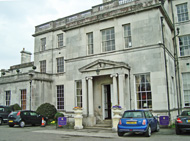
The main entrance.

The east side of a small lodge beside a tramway by the entrance to Addington Park.
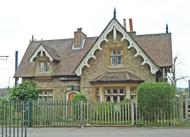

On the north side of the lodge is a carved coat-of-arms, depicting the Y-shaped pallium of the Archbishop of Canterbury, who once resided at Addington Palace.
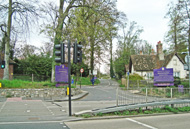
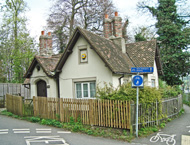
A second lodge - Stables Lodge - by the entrance to the driveway of Addington Palace.

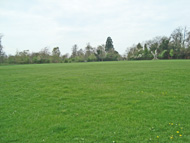

Addington Park.
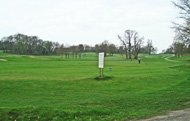
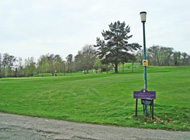
Addington Palace Golf Course, as seen from the front of Addington Palace.
The carrier problem was one of the most serious the Army had to face. Enteric carriers would feel in excellent health, but their urine and faeces could constantly or intermittently contain microbes in a virulent state ('Typhoid Mary' is the most notorious example). Under the conditions of camp life, the infection would easily be passed on to others. Carriers were not allowed to join or rejoin an army in the field as they would be the chief source of enteric infection.
Carriers were divided into two groups - temporary and chronic. Once the acute phase of infection was over, the patient was sent to Addington Park War Hospital for convalescence. There, by order of the War Office, laboratory tests on stools and urine were carried out four times at weekly intervals. If negative after that period, the patient was transferred to an auxiliary convalescent home for three weeks (during which time specimens were sent to Addington Park at weekly intervals). The patient then returned to Addington Park to be kept under observation while further bacteriological tests were made. Three consequent negative examinations were needed to confirm that a patient was temporarily free of disease. The length of time a carrier might carry the infection was indeterminate (sometimes for years), but generally by the tenth week of convalescence the bacillus had disappeared in all but a small percentage of cases (possibly under 1%).
Discharging carriers home to civilian life was not without problems, as they continued to be a public health threat. Carriers were not permitted to enter any occupation connected with the preparation of food or drink for human comsumption. Children in the care of a carrier were forbidden to go to school. Specific measures had to be undertaken by the carrier with respect to cleansing, disinfection, disposal of excreta, destruction of flies, and prevention of contamination of articles of food or drink for human consumption.
The Ministry of Health was empowered to inform any employer concerned with the preparation of food or drink that a person employed by them was suspected of being a carrier. If the suspicion was confirmed, the Ministry could give notice to the employer and employee to prevent the carrier from being employed by that firm or any other involved with handling food or drink, for a specfied period.
Improved public sanitation and effective vaccination introduced during the first half of the 20th century had reduced the incidence of enteric disease in developed countries, but outbreaks still occur in less developed countries.
It was not until WW2 that treatment with antibiotics for infectious diseases became available.
(Author unstated) 1914 Fever hospital for the troops. British Medical Journal 2 (2812), 895.
(Author unstated) 1915 A home war hospital for typhoid and dysentery. British Medical Journal 1 (2818), 38.
(Author unstated) 1915 The carrier problem in war. British Medical Journal 2 (2862), 687.
(Author unstated) 1919 Dysentery patients, convalescents and carriers. British Medical Journal 1 (3034), 225.
Bligh S 1994 Croydon in Old Photographs. Stroud, Alan Sutton Publishing Co.
Hort EC 1915 The carrier problem at home in time of war. British Medical Journal 2 (2868), 892-895.
www.1914-1918.net
www.croydon.gov.uk
www.croydonline.org
www.gilliesarchives.org.uk (1)
www.gilliesarchives.org.uk (2)
www.gilliesarchives.org.uk (3)
Return to home page